The Gothic Quarter – Barri Gòtic in Catalan, is one of the four neighborhoods of the Ciutat Vella District. Stretching from La Rambla to Via Laietana on one side and from the Mediterranean to the Ronda de Sant Pere on the other, the Gothic Quarter (known as “El Gòtic” by locals) is Barcelona’s Medieval Quarter.
The Gothic Quarter also has some remains of Barcino (the Roman Barcelona) worth exploring. With its labyrinth-like medieval streets, beautiful squares, and old Roman architecture, the Gothic Quarter Barcelona teems with history and culture.
During the 1800s and the early 1900s, the once entirely Gothic Quarter was transformed and modernized, with many old Gothic and Roman buildings becoming the subject of restoration projects to help maintain their history and charm. Today, the Barri Gòtic in Barcelona strikes the perfect balance between old and new, and it continues to be the beating heart of the vibrant city of Barcelona.
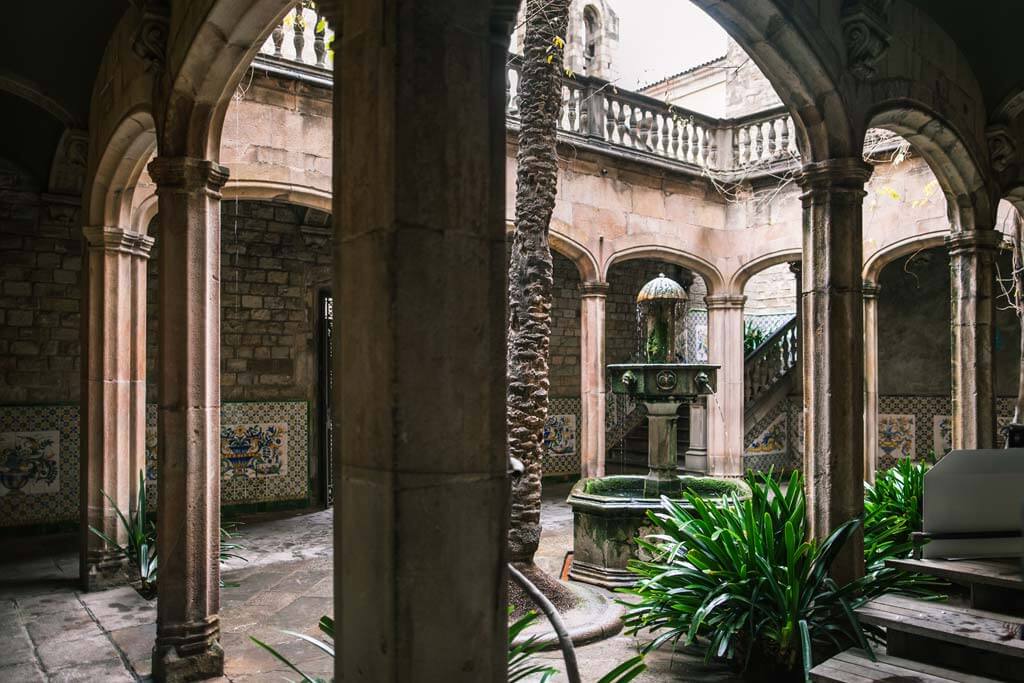
During your visit, you’ll be able to see and experience the best of Gothic Barcelona with its extraordinary historic buildings. In addition to sightseeing, you can wander the winding, cobblestoned lanes and mix with the locals at the buzzing cafes, bars, and restaurants. Book your stay in one of the best hotels in the Gothic Quarter, and you will be perfectly located for exploring some of Barcelona’s most iconic attractions.
So what to do in the Gothic Quarter Barcelona? We’ve compiled a guide of all the best things to do in Barcelona – Barri Gòtic to make sure you don’t miss out on anything.
Don’t miss the Barcelona exhibitions open right now!
Barri Gòtic Barcelona – Things to Do
1. Visit the Cathedral of Barcelona
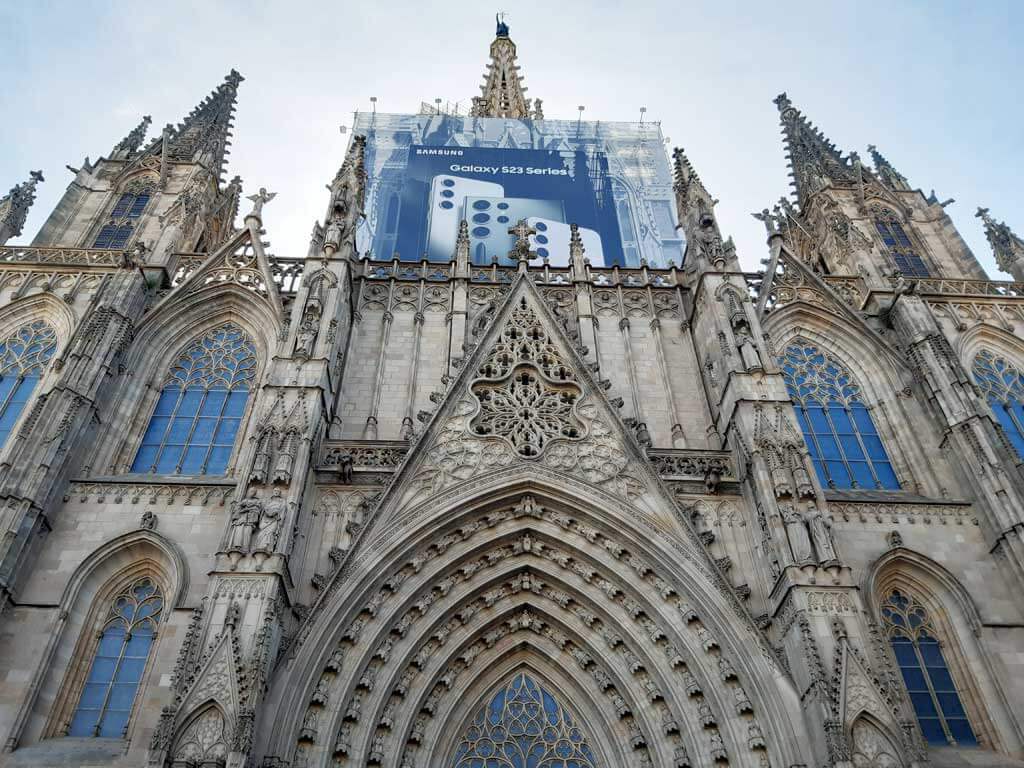
Located in the heart of the Barri Gòtic, the Cathedral of Barcelona is one of the most famous landmarks in Barcelona. The structure is many hundreds of years old, constructed between the 13th and 15th centuries, with its exterior having been finished in the late 1800s. Today, it is the official seat of the Archbishop of Barcelona.
The Cathedral of Barcelona is super charming and boasts breathtaking architecture, featuring classic Gothic style, as well as some Neo-Gothic additions. You can wander around the Cathedral and see the choir, pulpit, and the different chapels.
There is a fee to visit the Cathedral (cultural visit), and it is open from 9.30 to 18.30 (Saturdays and on the Eve of Religious festivities, only until 17.30). Out of these hours, you can access the Cathedral for praying or a mass.
TIP: Look Up! There are numerous gargoyles on the exterior of the Cathedral. Their scary aspect was meant to inspire fear in parishioners. Because most Medieval Europeans were illiterate, the clergy needed visual representations of the horrors of hell to drive people to the sanctuary of the Church.
2. Don’t Miss the Cloister of the Cathedral
While visiting the Cathedral, don’t miss its Cloister, also in Gothic style. You can access the Cloister from the Cathedral (it is said that the Romanesque door that connects both constructions was from the first Romanesque Cathedral) and also from outside, from Carrer Pietat and Carrer Santa Eulàlia.
In the center of the Cloister, there is a garden and a stone fountain dating from the mid-15th century, where the traditional “l’ou com balla” (the egg dances) takes place on the occasion of the Corpus Christi festival. There are also thirteen white geese wandering around a large pond.
The thirteen geese represent Santa Eulàlia, the Saint Patron of the Cathedral, who was martyred during Roman times when she was thirteen. Legend has it that her body is entombed in the crypt of the Cathedral.
3. Take a Barri Gòtic Walking Tour
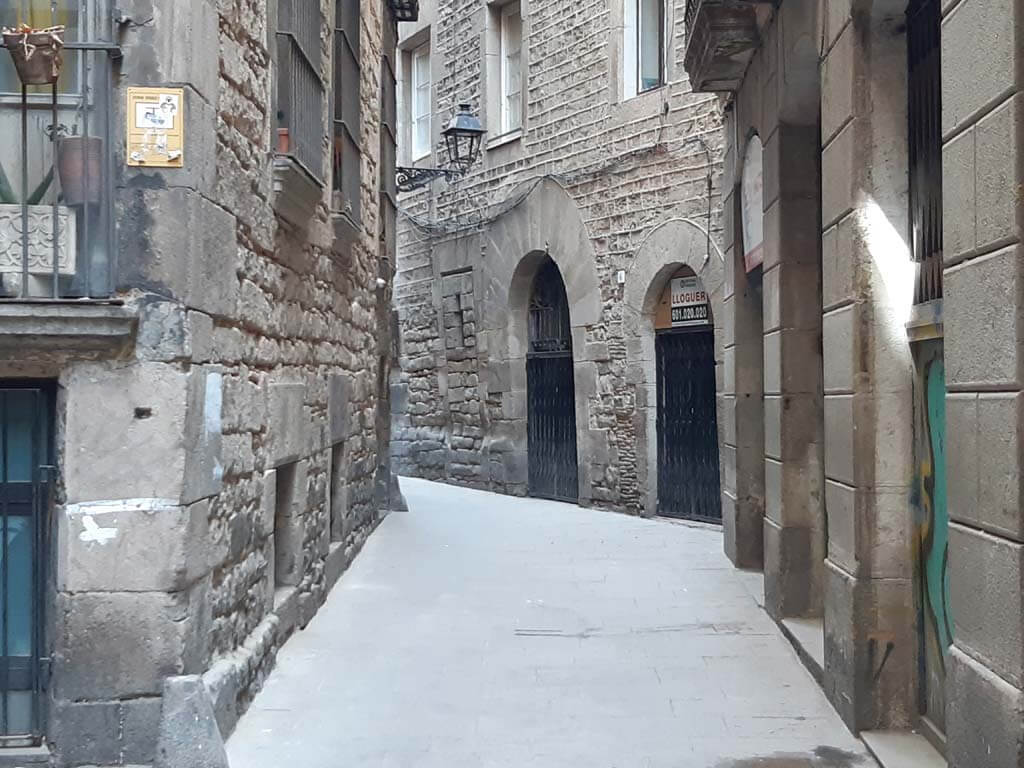
There’s no better way to experience new places than to do so at the hands of a local expert. Enjoy a walking tour of the Barri Gotic neighborhood and see all the sights and sounds that make it so rich in history and culture.
The tour is about two hours long, and you’ll visit several fascinating attractions, including the Plaça de Sant Felip Neri and the Plaça del Rei. By exploring the Barri Gòtic Barcelona on foot, led by a local guide, you’ll be able to get a real feel for the local atmosphere and the essence of this medieval neighborhood, as well as learn about local history, current events, and the fascinating stories behind the attractions you see – Click here to book this Barri Gòtic walking tour
4. Admire Carrer del Bisbe and Bisbe Bridge
Carrer del Bisbe (Bishop’s Street in English) is one of the most photographed streets in Barcelona Gothic Quarter. In Roman times, it was one of the main streets leading to the Roman Forum.
The elaborate footbridge that spans Carrer del Bisbe, connecting the Palau de la Generalitat with the Casa dels Canonges, looks very “Gothic,” but it was only constructed in 1928. El Pont del Bisbe, or Bishop’s Bridge, is adorned with sculptures steeped in symbolism.
There is one in particular that is very curious, and you will see it as you pass underneath the bridge: a skull pierced by a dagger. There are many morbid theories about this skull and its meaning, but it remains an enigma today.
TIP: During your stroll around this area, don’t miss a quick look at the lovely inner courtyards of Casa de L’ Ardiaca (1 Carrer Santa Llúcia) and Museu Frederic Marés (5 Plaça Sant Iu), which are free to visit. The latest has a cute café in the nation which is ideal for a coffee break.
5.Visit the Plaça del Rei and the Palau Reial
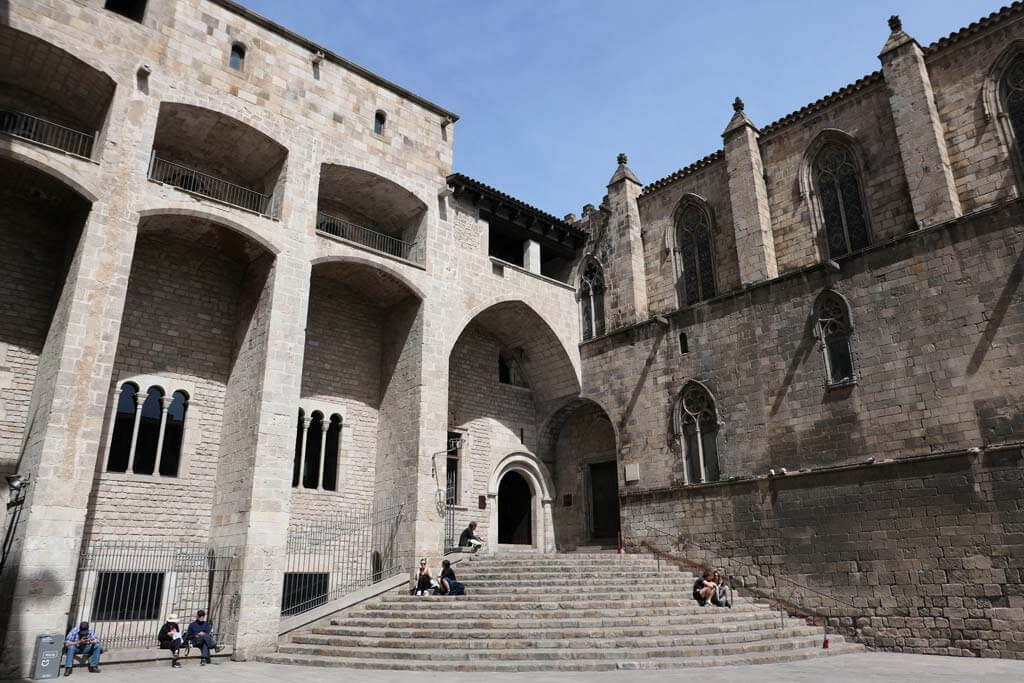
Located within the Placa Del Rei – a medieval public square dating back to the 14th century – the Palau Reial Major is a complex of buildings that used to be the residence of the Counts of Barcelona (and Kings of Aragon).
Built in the Catalan Gothic style, it is a fascinating building to visit, both for its architecture and history. Visit the Saló del Tinell, the impressive mid-14th-century hall where Christopher Columbus was received by the Catholic Kings when he returned from the Americas. Other parts of the complex worth visiting include the Chapel of St. Agatha, built in 1302 and attached to the ancient Roman wall, and the Palace of Lloctinent.
From the outside, you can admire the Torre del Rei Martí (King Martí’s Tower). It has five floors made up of galleries of semicircular arches. The legend has it that it was commissioned by King Martí l’Humà (hence the name) to breathe fresh air, as the streets of Barcelona in Medieval times smelled terrible. The truth is that the construction of this Tower began later than the reign of King Martí to function as a watchtower over the city and especially to control the arrival of boats by sea.
6. Explore the Jewish Quarter
Explore Barcelona’s Jewish heritage by embarking on a two-hour walking tour during which you’ll visit the ruins of the Old Synagogue, the site of the medieval Mikve, and several additional synagogues that have continued Barcelona’s Jewish heritage.
During the tour, you’ll hear all about Spain’s fascinating Jewish history from a local, dating back to the third century, and learn about the rise and fall of the Jewish community through the centuries – Click here to book this Jewish Quarter walking tour
7. Learn about Barcelona’s Past at the History Museum
See what Barcelona was like during ancient Roman times when you visit the extraordinary Museu d’Història de Barcelona (Barcelona’s History Museum) in Barri Gòtic. Boasting a plethora of incredible exhibits, some permanent and several temporary, the History Museum of Barcelona aims to preserve the city’s fascinating history, study it in depth, and share it with visitors.
The Museum d’Història de Barcelona is one of the must-visit museums in Barcelona. Within the museum, you can wander around the remains of an ancient Roman neighborhood, which is located several meters below current Barcelona. You can even walk between the actual foundations of the Cathedral of Barcelona! – Address: Plaça del Rei. Closed on Mondays
8. Visit Plaça de Sant Jaume
Plaça de Sant Jaume is the administrative center of the City and Catalonia. In Roman times, the current Plaça de Sant Jaume used to be the center of the city of Barcino, where the Roman Forum was located. Today, it is the home of the Palau de la Generalitat (the seat of the Catalan Government and one of the rare buildings in Barcelona in Renaissance style) as well as the City Hall that stand opposite each other.
The plaza gets its name from the Church of Sant Jaume, which stood in its place dating back to Medieval times. However, it was demolished in the 19th century and replaced with the modern square and the City Hall.
9. Visit the Roman Temple of Augustus
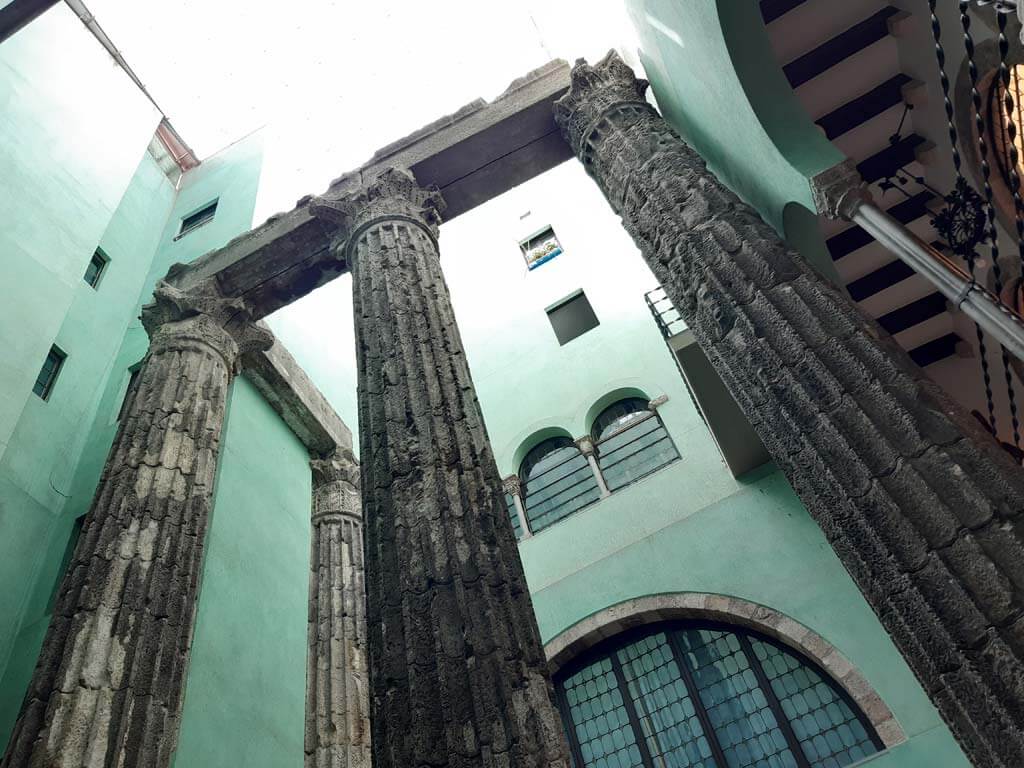
Not far from Plaça Sant Jaume, the curious visitor can still see some remains of the Temple of Augustus, which was part of Barcino’s Roman Forum. There is not much left (a couple of columns and a bit of the podium that sustained them), but its monumental size can give an idea of how important Barcino was for the Roman Empire.
Today, the Temple of Augustus is at 10 Carrer del Paradis, in the courtyard of a medieval house beautifully restored. It is free to visit, and some information panels will tell you more about the Temple, the Roman Forum, and Barcino in general.
10. Mysteries and Legends Tour
Discover the most fascinating, never-before-heard stories about the Gothic Quarter – Barcelona and its ancient inhabitants on this unique Mysteries and Legends Tour. Walk around the old streets and listen to your guide as they paint a picture of what life was like during the Roman and Medieval times. The tour lasts about an hour and a half, and you’ll be treated to a series of incredible stories of Old Barcelona, ranging from humorous anecdotes to creepy tales – Click here to book this Mysteries and Legends tour
11. Plaça del Pi and Esglèsia del Pi
Plaça del Pi is one of the most charming squares in Barcelona – Gothic Quarter. It is surrounded by old businesses, a couple of cafes-terrace ideal for a coffee break (or a beer break), and the Basilica of Santa Maria del Pi.
The current building was constructed in Catalan Gothic style in the XIV to replace previous structures dating back to the Vth century. It comprises a single nave, with side chapels between buttresses, and the cross-vaulted ceiling is one of the highest in the country. The Basilica’s main feature, however, is its giant rose window, which is the biggest in Catalonia. Inside the Basilica, the 14th-century Gothic image of Santa Maria del Pi (Virgin of the Pine tree) watches over Her parishioners.
12. Plaça Sant Felip Neri and Sant Felip Neri Church
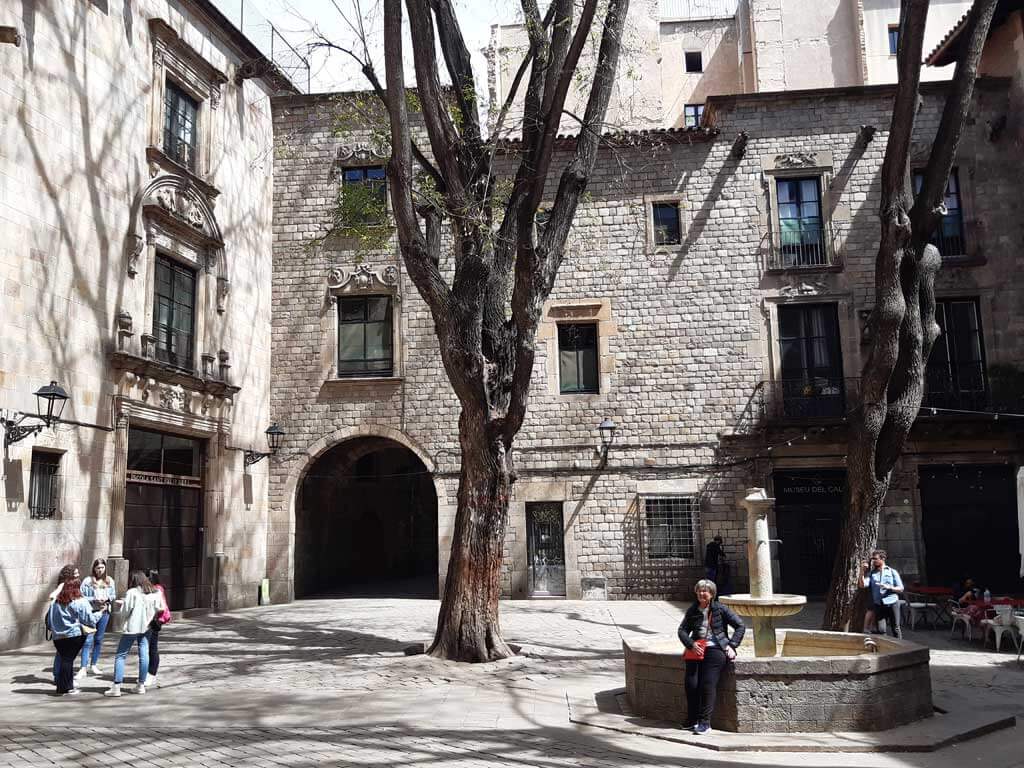
This little and shady square is one of the loveliest squares of the Gothic District Barcelona. It is dominated by the Baroque Church of Sant Felip Neri (paid entrance), and there’s also a beautiful stone fountain and a school. When kids are not playing around, the square is in total silence.
A plaque reminds us of the bombing by fascist planes in January 1938 that killed 42 people who had taken refuge in the bomb shelter below the Church, and you can still see the scars of this terrible chapter on the façades. Many of whom were children.
13. Taste Local Specialties
One of the best things to do in Gothic Quarter Barcelona is taste local specialties. Delve into the history of Barri Gotic by means of your sense of taste when you embark on this awesome food and history tour of Barcelona – Gothic Quarter.
This unique tour allows you to learn about your surroundings through an introduction to local food, allowing you to experience the culture from an entirely different perspective. During the tour, you’ll visit several bars and restaurants where you’ll try delicious, authentic local cuisine and learn about its significance in Catalan culture and life.
One of your stops will be at the infamous Boqueria Market, where your senses will be overwhelmed with incredible sights, smells, and sounds – Click here to book this food and history tour
14. Mural of the Kiss

Installed in 2014, the Mural of the Kiss – also known as “The World Begins with Every Kiss” and “The Kiss Mural” – is an incredible contemporary piece of art found in Barri Gòtic Barcelona.
From afar, the Mural may appear to be ordinary, but upon closer inspection, you’ll discover that it’s actually made up of thousands of little ceramic mosaic photographs that all come together to create an image of two people kissing.
The Mural was designed and created by a local artist, and the photographs were submitted by locals too. As a whole, the Mural of the Kiss is a commemoration of the Spanish War of Succession, and the photos all represent “a moment of freedom.” For the best pictures, it is best to visit late in the morning – Address: 16 Carrer dels Capellans
15. Plaça Reial
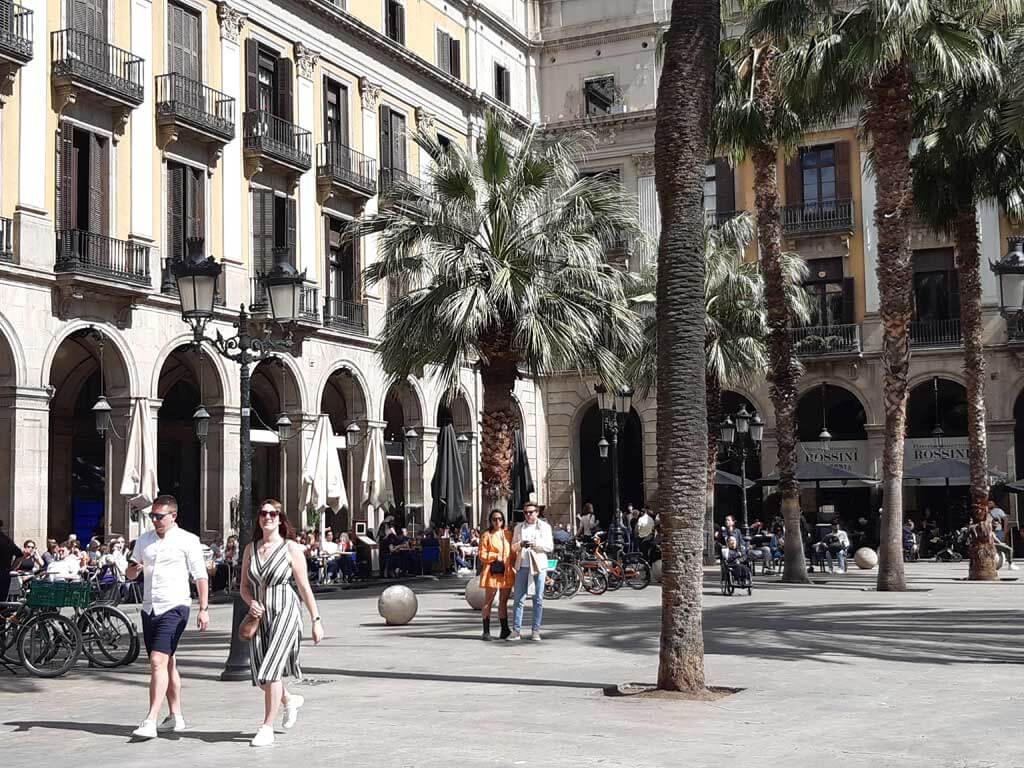
Far more than just another Barcelona square, Plaça Reial is a gorgeous square littered with street lamps and palm trees and surrounded by a plethora of bars, restaurants, and nightclubs. The square is always alive at night and has been the venue for many open-air concerts and large gatherings, including New Year’s Eve parties.
Plaça Reial was built in the location of the Capuchin Convent of Santa Madrona, a gathering place for Capuchin monks during the 19th century. The convent was demolished in 1835 and replaced by the square later that century.
As a curiosity, the street lamps in Plaça Reial are one of Antoni Gaudi’s first works, in 1879. They are crowned by the helmet of the Roman God Mercury and two coiled snakes.
16. Bosc de les Fades
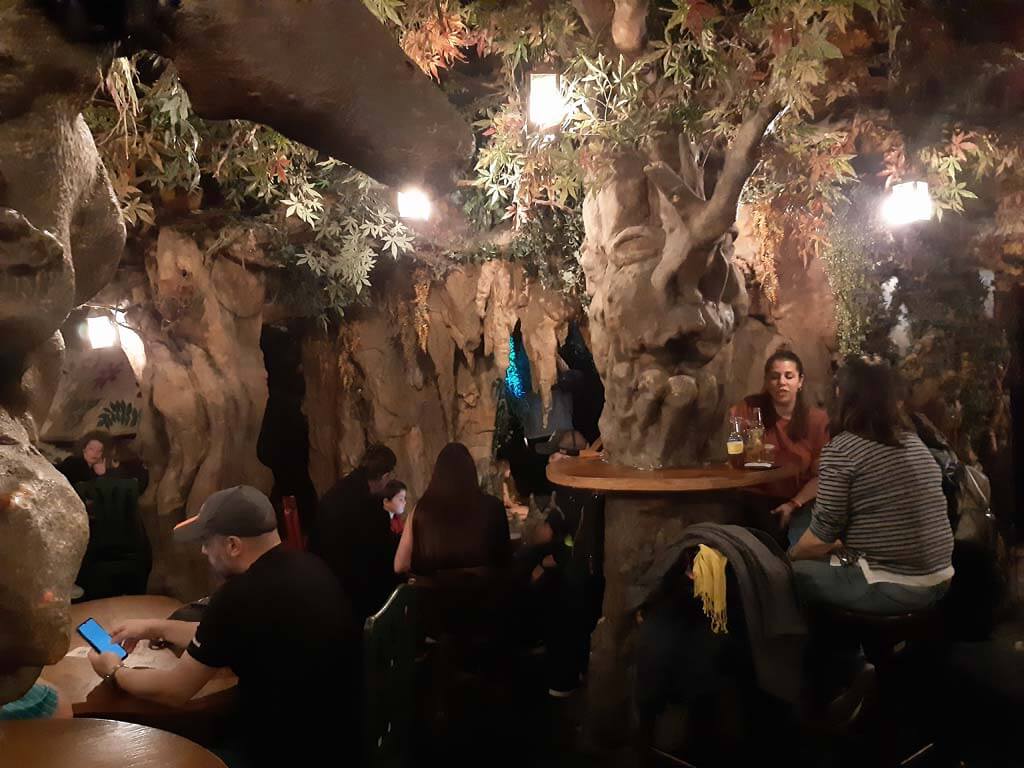
Far more than just an ordinary café, restaurant, or bar, Bosc De Les Fades offers guests the chance to escape the ordinary in Barcelona and retreat to a fantasy land. Located at the bottom of La Rambla, on the alley that leads to the Wax Museum, it’s a place where you can enjoy a warm cup of delicious coffee or a specialty cocktail and a mouthwatering burger.
Bosc Des Les Fades offers an entirely unique experience in the most unlikely of places, and it is something you don’t want to miss out on! – Address: 7 Passatge de la Banca.
And there you have it, the best things to do in Barri Gòtic, Barcelona. Which sites and activities appeal to you most?

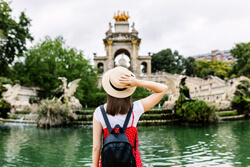

1 thought on “Things to Do in Gothic Quarter Barcelona (Barri Gòtic)”
Comments are closed.